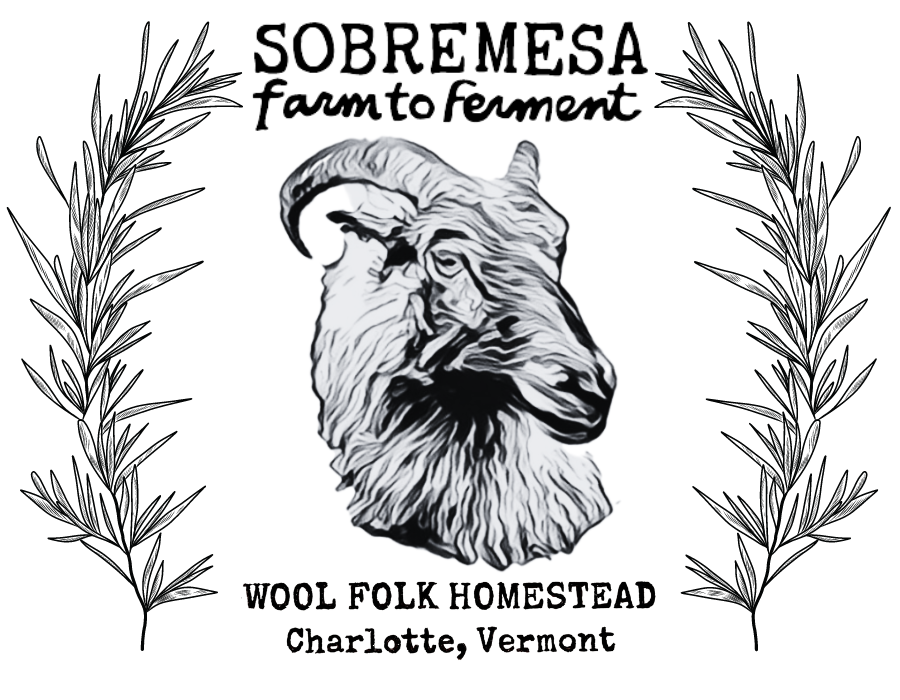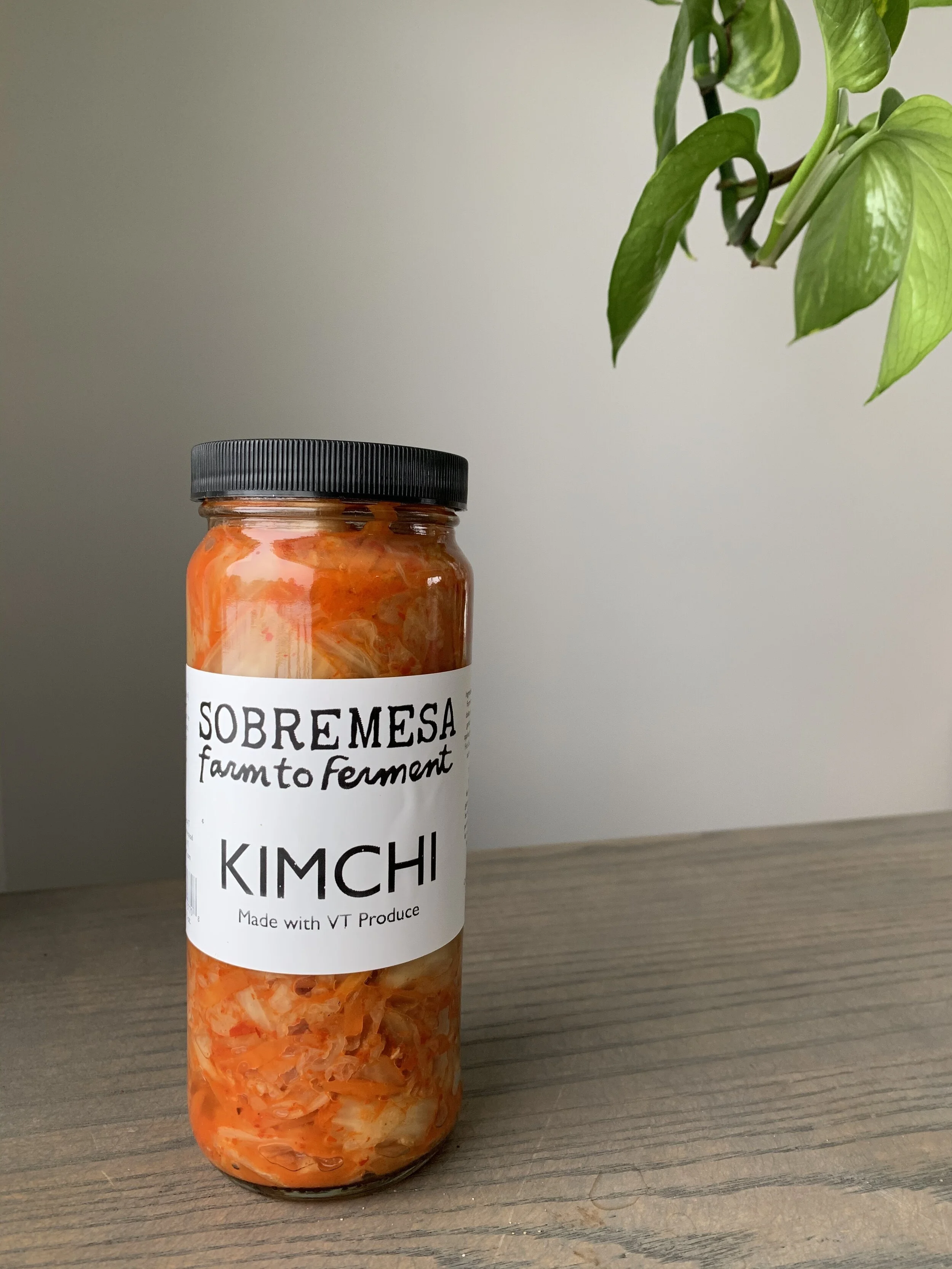Kimchi
Kimchi
Kimchi is a spicy, invigorating kimchi made with napa cabbage, carrots, daikon radish, garlic, ginger, hot peppers, gochugaru (Korean chili pepper), apples, Red Boat Fish Sauce. Sweetened with apples, this kimchi has a slight fruity flavor. We eat this kimchi on everything. Really.
Click here to view a recent write-up in our wonderful Vermont paper!
To Koreans, kimchi is more than just “fermented vegetables.” While napa cabbage kimchi is most common, there are many varieties of kimchi made with different ingredients. About 1.5 million tons of kimchi is consumed in Korea each year (Morning Edition, NPR 8/22/16)
Making kimchi is a labor of love. One that many Koreans have learned from family. We have spent years making kimchi, practicing the cultural art form of brining the napa cabbage overnight, preparing a fresh kimchi paste made with Korean grown peppers, local organic ginger and Red Boat Fish Sauce. Diligently mixing in the chili paste to flavor the crisp, creamy cabbage grown a few miles away at Full Moon Farm. The rhythm of this process harkens back to many years of cultural traditions, of families and communities coming together in Korea to preserve food for the winter. Here in Vermont, to enjoy fresh tasting local vegetables in the winter, we too need to preserve food.
Kimchi making is a centuries old tradition. “When the first frost came, families would create stockpiles of kimchi, storing it in large clay pots often buried in the ground. These pots of kimchi sustained them through the long winter and lean spring, when fresh vegetables were unavailable. Both South and North Korea are so proud of the autumn ritual that they campaigned — separately, but successfully — to put kimjang on UNESCO’s list of “intangible cultural heritage of humanity”… In a custom similar to an Amish barn raising, entire villages used to turn out during kimjang, helping one family make its kimchi before moving on to the next. Hogs were slaughtered and makgeolli — Korean rice wine — was consumed over songs and laughter. During kimjang, families cleaned hundreds of heads of cabbage and soaked them in large tubs of salty water for a couple of days, turning them over twice a day. They slathered each cabbage leaf with a sauce made of chili pepper, garlic, ginger, scallion, radish, fermented fish and other ingredients. The cabbages were then stacked and patted down in jars. Lactic fermentation gave the kimchi its unique taste and texture… The food is so closely associated with Korean identity that when South Korea sent its first astronaut to the International Space Station in 2008, kimchi was taken along on the mission.” (Choe Sang-Hun for NY Times, 11/21/20)
In reading these accounts, we can understand the cultural importance of the labor intensive tradition of making kimchi. Koreans make kimchi to nourish themselves throughout winter, just as we preserve food to get us through winter here in Vermont. We have been inspired by Korean tradition and hope to honor the families who have been making kimchi over the centuries by providing our local community with a variety of ferments.
*Note: All products are sugar free, gluten free, and vegan (with the exception of Kimchi, which is sugar-free and GF but not Vegan. Red Boat Fish Sauce is made solely from anchovies and salt).
Produce for our products is sourced from the following certified organic VT farms:
Full Moon Farm
Woods Market Garden
Pete's Greens
Thank you to our farmers!
All products should be refrigerated upon receipt (yes, before opening) as they are raw and live cultured foods. They are not heat processed, canned, or sealed. Jars that bubble upon opening are safe to eat.


